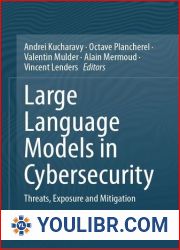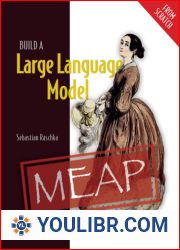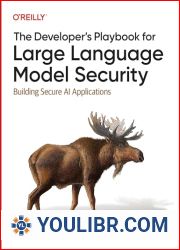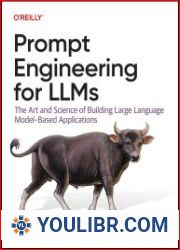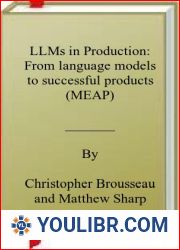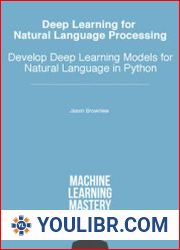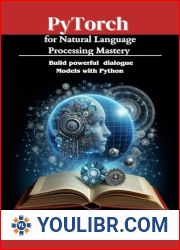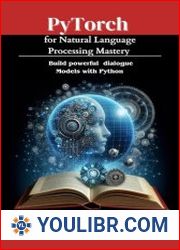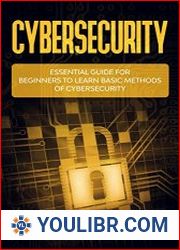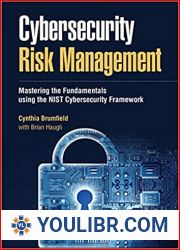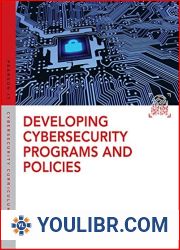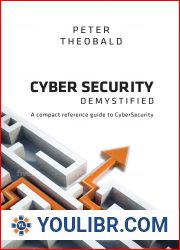
BOOKS - Large Language Models in Cybersecurity: Threats, Exposure and Mitigation

Large Language Models in Cybersecurity: Threats, Exposure and Mitigation
Author: Andrei Kucharavy
Year: August 26, 2024
Format: PDF
File size: PDF 12 MB
Language: English

Year: August 26, 2024
Format: PDF
File size: PDF 12 MB
Language: English

It also alerts developers of LLMs to the potential risks of their work for cybersecurity, providing them with tools to mitigate those risks. The book begins with an introduction to LLMs and their main application areas, followed by a description of the most salient threats posed by LLMs in cybersecurity. In Part III, the authors explore the future of LLMs and the technologies and science underpinning their development. They also discuss macro-level levers available to regulators to further cybersecurity in the age of LLMs. Finally, in Part V, the authors speculate on what a secure design and integration of LLMs would look like and present a summary of the duality of LLMs in cybersecurity. While the general public discovered Large Language Models (LLMs) with ChatGPT, a generative autoregressive model, they are far from the only models in the LLM family. Various architectures and training regimens optimized for specific uses were designed throughout their development, which were then classified as different LLM families. This book is intended to provide cybersecurity practitioners with knowledge of the risks associated with LLMs and how to mitigate them. It also alerts developers of LLMs to the potential risks of their work for cybersecurity, providing them with tools to mitigate those risks. The book begins with an introduction to LLMs and their main application areas, followed by a description of the most salient threats posed by LLMs in cybersecurity.
Он также предупреждает разработчиков LLM о потенциальных рисках их работы для кибербезопасности, предоставляя им инструменты для снижения этих рисков. Книга начинается с введения в LLM и их основные области применения, за которым следует описание наиболее существенных угроз, создаваемых LLM в сфере кибербезопасности. В части III авторы исследуют будущее LLM, а также технологии и науку, лежащие в основе их развития. Они также обсуждают доступные регуляторам рычаги макроуровня для дальнейшей кибербезопасности в век LLM. Наконец, в части V авторы рассуждают о том, как будет выглядеть безопасная конструкция и интеграция LLM, и представляют краткое изложение двойственности LLM в кибербезопасности. В то время как широкая публика обнаружила большие языковые модели (LLM) с ChatGPT, генеративной авторегрессионной моделью, они далеко не единственные модели в семействе LLM. В ходе разработки были разработаны различные архитектуры и схемы обучения, оптимизированные для конкретных применений, которые затем были классифицированы как различные семейства LLM. Эта книга предназначена для того, чтобы предоставить специалистам по кибербезопасности знания о рисках, связанных с LLM, и о том, как их снизить. Он также предупреждает разработчиков LLM о потенциальных рисках их работы для кибербезопасности, предоставляя им инструменты для снижения этих рисков. Книга начинается с введения в LLM и их основные области применения, за которым следует описание наиболее существенных угроз, создаваемых LLM в сфере кибербезопасности.
Il avertit également les développeurs LLM des risques potentiels de leur travail pour la cybersécurité en leur fournissant des outils pour réduire ces risques. livre commence par une introduction aux LLM et à leurs principaux domaines d'application, suivie d'une description des menaces les plus importantes posées par les LLM dans le domaine de la cybersécurité. Dans la partie III, les auteurs explorent l'avenir des LLM, ainsi que la technologie et la science qui sous-tendent leur développement. Ils discutent également des leviers macro disponibles pour la cybersécurité à l'ère LLM. Enfin, dans la partie V, les auteurs discutent de la conception et de l'intégration sécurisées des LLM et présentent un résumé de la dualité des LLM en matière de cybersécurité. Alors que le grand public a découvert de grands modèles linguistiques (LLM) avec ChatGPT, un modèle génératif d'auto-régression, ils sont loin d'être les seuls modèles de la famille LLM. Au cours du développement, différentes architectures et schémas d'apprentissage ont été développés, optimisés pour des applications spécifiques, qui ont ensuite été classés dans différentes familles LLM. Ce livre vise à fournir aux professionnels de la cybersécurité des connaissances sur les risques associés au LLM et sur la façon de les réduire. Il avertit également les développeurs de LLM des risques potentiels de leur travail pour la cybersécurité en leur fournissant des outils pour réduire ces risques. livre commence par une introduction aux LLM et à leurs principaux domaines d'application, suivie d'une description des menaces les plus importantes posées par les LLM dans le domaine de la cybersécurité.
También advierte a los desarrolladores de LLM sobre los riesgos potenciales de su funcionamiento para la ciberseguridad, proporcionándoles herramientas para reducir estos riesgos. libro comienza con una introducción a la LLM y sus principales áreas de aplicación, seguida de una descripción de las amenazas más significativas que plantea la LLM en el ámbito de la ciberseguridad. En la parte III, los autores exploran el futuro de la LLM, así como la tecnología y la ciencia que sustentan su desarrollo. También discuten las palancas de nivel macro disponibles para los reguladores para una mayor ciberseguridad en la era LLM. Por último, en la parte V, los autores especulan sobre cómo sería un diseño e integración seguros de LLM y presentan un resumen de la dualidad de LLM en ciberseguridad. bien el público en general ha descubierto grandes modelos de lenguaje (LLM) con ChatGPT, un modelo de autorregresión generativa, están lejos de ser los únicos modelos de la familia LLM. Durante el desarrollo se desarrollaron diferentes arquitecturas y esquemas de aprendizaje optimizados para aplicaciones específicas, que luego fueron clasificados como diferentes familias LLM. Este libro está diseñado para proporcionar a los profesionales de ciberseguridad conocimientos sobre los riesgos asociados a la LLM y cómo reducirlos. También alerta a los desarrolladores de LLM sobre los posibles riesgos de su funcionamiento para la ciberseguridad, dotándoles de herramientas para reducir estos riesgos. libro comienza con una introducción a la LLM y sus principales áreas de aplicación, seguida de una descripción de las amenazas más significativas que plantea la LLM en el ámbito de la ciberseguridad.
Mette inoltre in guardia gli sviluppatori LLM sui potenziali rischi per la sicurezza informatica fornendo loro strumenti per ridurre questi rischi. Il libro inizia con l'introduzione di LLM e dei relativi ambiti di applicazione principali, seguita da una descrizione delle minacce più significative che LLM pone nel settore della sicurezza informatica. Nella parte III, gli autori esplorano il futuro della LLM e la tecnologia e la scienza alla base del loro sviluppo. Stanno anche discutendo la leva a disposizione dei regolatori per la sicurezza informatica nell'era LLM. Infine, nella parte V, gli autori ragionano su come sarà la progettazione sicura e l'integrazione di LLM e presentano un riassunto della dualità di LLM nella sicurezza informatica. Mentre il pubblico ha scoperto grandi modelli linguistici (LLM) con un modello di regressione genetica, non sono gli unici della famiglia LLM. Durante lo sviluppo sono state sviluppate diverse architetture e diagrammi di apprendimento ottimizzati per applicazioni specifiche, che sono state poi classificate come diverse famiglie LLM. Questo libro è progettato per fornire agli esperti di cybersecurity la conoscenza dei rischi connessi a LLM e come attenuarli. Mette inoltre in guardia gli sviluppatori di LLM sui potenziali rischi per la sicurezza informatica, fornendo loro strumenti per ridurre questi rischi. Il libro inizia con l'introduzione di LLM e dei relativi ambiti di applicazione principali, seguita da una descrizione delle minacce più significative che LLM pone nel settore della sicurezza informatica.
Es warnt auch LLM-Entwickler vor den potenziellen Risiken ihrer Arbeit für die Cybersicherheit, indem es ihnen Werkzeuge zur Verfügung stellt, um diese Risiken zu reduzieren. Das Buch beginnt mit einer Einführung in LLMs und ihre Hauptanwendungsgebiete, gefolgt von einer Beschreibung der wichtigsten Bedrohungen, die von LLMs im Bereich der Cybersicherheit ausgehen. In Teil III untersuchen die Autoren die Zukunft des LLM sowie die Technologie und Wissenschaft, die ihrer Entwicklung zugrunde liegen. e diskutieren auch die den Regulierungsbehörden zur Verfügung stehenden Hebel auf Makroebene für die weitere Cybersicherheit im Zeitalter des LLM. Schließlich diskutieren die Autoren in Teil V, wie ein sicheres LLM-Design und -Integration aussehen würde, und präsentieren eine Zusammenfassung der Dualität von LLM in der Cybersicherheit. Während die breite Öffentlichkeit große Sprachmodelle (LLMs) mit ChatGPT, einem generativen autoregressiven Modell, entdeckt hat, sind sie bei weitem nicht die einzigen Modelle in der LLM-Familie. Im Zuge der Entwicklung wurden verschiedene für spezifische Anwendungen optimierte Architekturen und rnmuster entwickelt, die dann als verschiedene LLM-Familien klassifiziert wurden. Dieses Buch soll Cybersicherheitsexperten mit Wissen über die mit LLM verbundenen Risiken und deren Reduzierung versorgen. Es warnt auch LLM-Entwickler vor den potenziellen Risiken ihrer Arbeit für die Cybersicherheit, indem es ihnen Werkzeuge zur Verfügung stellt, um diese Risiken zu reduzieren. Das Buch beginnt mit einer Einführung in LLMs und ihre Hauptanwendungsgebiete, gefolgt von einer Beschreibung der wichtigsten Bedrohungen, die von LLMs im Bereich der Cybersicherheit ausgehen.
''
Ayrıca, LLM geliştiricilerini, bu riskleri azaltmak için araçlar sağlayarak çalışmalarının potansiyel siber güvenlik riskleri konusunda uyarır. Kitap, LLM'ye ve ana uygulamalarına bir giriş ile başlar, ardından LLM'nin siber güvenlik alanında yarattığı en önemli tehditlerin bir açıklaması gelir. Bölüm III'te, yazarlar LLM'nin geleceğini ve gelişimlerinin arkasındaki teknolojileri ve bilimi araştırıyorlar. Ayrıca, LLM çağında daha fazla siber güvenlik için düzenleyicilere sunulan makro düzeydeki kolları tartışıyorlar. Son olarak, Bölüm V'de, yazarlar güvenli bir LLM tasarımının ve entegrasyonunun nasıl görüneceğini tartışıyor ve siber güvenlikte LLM dualitesinin bir özetini sunuyor. Genel halk, üretken bir otoregresif model olan ChatGPT ile büyük dil modelleri (LLM'ler) keşfetmiş olsa da, LLM ailesindeki tek modellerden uzaktır. Geliştirme sırasında, daha sonra farklı LLM aileleri olarak sınıflandırılan çeşitli uygulamaya özgü optimize edilmiş mimariler ve öğrenme şemaları geliştirildi. Bu kitap, siber güvenlik uzmanlarına LLM riskleri ve bunların nasıl azaltılacağı hakkında bilgi vermeyi amaçlamaktadır. Ayrıca, LLM geliştiricilerini, bu riskleri azaltmak için araçlar sağlayarak çalışmalarının potansiyel siber güvenlik riskleri konusunda uyarır. Kitap, LLM'ye ve ana uygulamalarına bir giriş ile başlar, ardından LLM'nin siber güvenlik alanında yarattığı en önemli tehditlerin bir açıklaması gelir.
كما أنه ينبه مطوري LLM إلى مخاطر الأمن السيبراني المحتملة لعملهم من خلال تزويدهم بأدوات للتخفيف من هذه المخاطر. يبدأ الكتاب بمقدمة إلى LLM وتطبيقاتها الرئيسية، يليه وصف لأهم التهديدات التي تشكلها LLM في مجال الأمن السيبراني. في الجزء الثالث، يستكشف المؤلفون مستقبل الماجستير في القانون والتقنيات والعلوم الكامنة وراء تطورهم. كما يناقشون الروافع على المستوى الكلي المتاحة للمنظمين لمزيد من الأمن السيبراني في عصر الماجستير في القانون. أخيرًا، في الجزء الخامس، يناقش المؤلفون الشكل الذي سيبدو عليه تصميم وتكامل LLM الآمن ويقدمون ملخصًا لازدواجية LLM في الأمن السيبراني. بينما اكتشف عامة الناس نماذج لغوية كبيرة (LLMs) مع ChatGPT، وهو نموذج توليدي ذاتي العدوان، فهي بعيدة كل البعد عن النماذج الوحيدة في عائلة LLM. أثناء التطوير، تم تطوير العديد من الهياكل المعمارية وخطط التعلم المثلى الخاصة بالتطبيقات، والتي تم تصنيفها بعد ذلك على أنها عائلات مختلفة من الماجستير في القانون. يهدف هذا الكتاب إلى تزويد المتخصصين في الأمن السيبراني بمعرفة مخاطر الماجستير في القانون وكيفية التخفيف منها. كما ينبه مطوري LLM إلى مخاطر الأمن السيبراني المحتملة لعملهم من خلال تزويدهم بأدوات للتخفيف من هذه المخاطر. يبدأ الكتاب بمقدمة إلى LLM وتطبيقاتها الرئيسية، يليه وصف لأهم التهديدات التي تشكلها LLM في مجال الأمن السيبراني.







